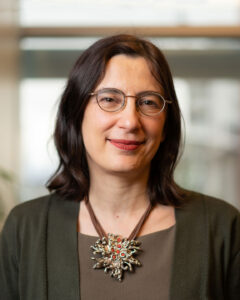2022 Teaching Assistantship
Seungsu Lee Awarded Teaching Assistantship from the University of Utah
Graduate student Seungsu Lee has received a Teaching Assistantship Award from the University of Utah. The award is designed to bolster undergraduate education while providing graduate students with experience teaching in undergraduate environments. The opportunity is for full-time graduate teaching assistants.
“Receiving the award means a lot to me in different ways,” said Lee. “It tells me that my proposal is effective and will help many people who study math. Also, the award ensures support from the department and my mentor in implementing my proposal into an actual class. In terms of my career, the award confirms my teaching skills. I learned English as a second language, and I have a strong Korean accent, so receiving the award proves that one can develop communication and teaching skills to teach mathematics efficiently regardless one’s background.”

"When I teach, I love to communicate with students, tell them what they’re doing correctly, and teaching them how to do mathematical reasoning. In particular, I like the moment when students understand what I’m teaching about a mathematical concept, and I can see the “aha” moment in their faces."
Lee will be teaching an asynchronous online class for Math 2270—Linear Algebra--and will have responsibility for creating lecture videos for the department website. Asynchronous learning allows an instructor flexibility in creating a learning environment that will allow for different kinds of learners and learning styles. Lee’s academic advisor is Professor Karl Schwede, and his mentor for the project is Assistant Professor (Lecturer) Matt Cecil.
“I like to chat about mathematics with other people,” said Lee. “When I teach, I love to communicate with students, tell them what they’re doing correctly, and teaching them how to do mathematical reasoning. In particular, I like the moment when students understand what I’m teaching about a mathematical concept, and I can see the “aha” moment in their faces.”
When Lee was a child, his father showed him the magic square. The magic square is a square array of numbers in which all the rows, columns, and diagonals add up to the same sum, which is called the magic constant. This is the fun part in working through the square—you get the same number when you add numbers for each row, column, or even diagonals. “As far as I can remember, the magic square marked the first time that I ever saw a mathematical puzzle,” said Lee. He was very interested in the algorithm to solve the magic square. As he got older, he started to do more and more math. When he was in high school, he had a great math teacher, who showed him rigorous ways to think about calculus by using epsilon and delta. This was a turning point for Lee that made him decide to forge a career in math.
He completed his undergraduate degree at Yonsei University in South Korea. “I got interested in algebraic geometry when I was an undergraduate,” he said. “Unfortunately, my university’s graduate school didn’t focus on this area of math, so I searched online and was excited to see that the U’s Math Department has a huge research group in algebraic geometry. I was so happy to be accepted to the department’s program.” After he earns a Ph.D., he plans to seek a research position.








